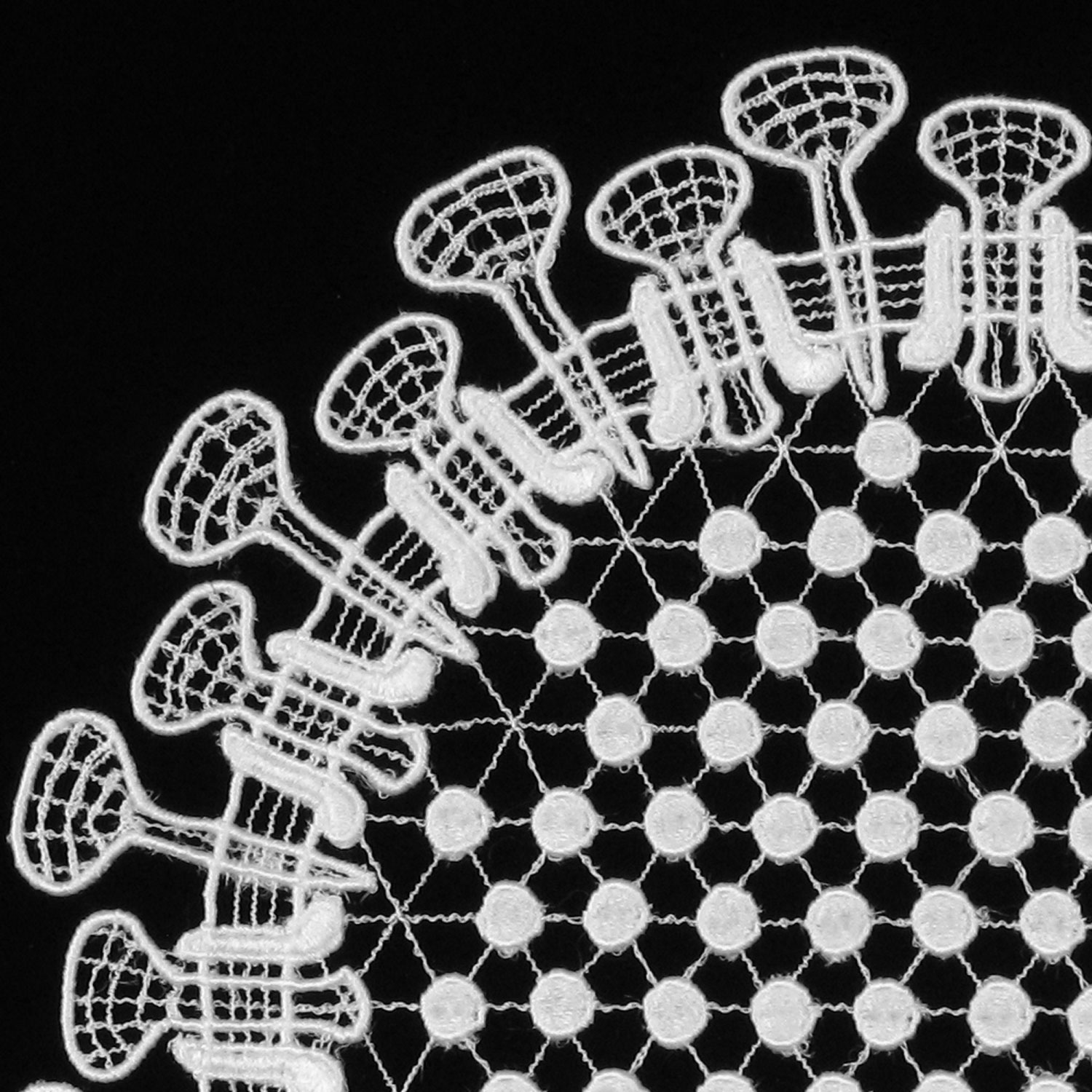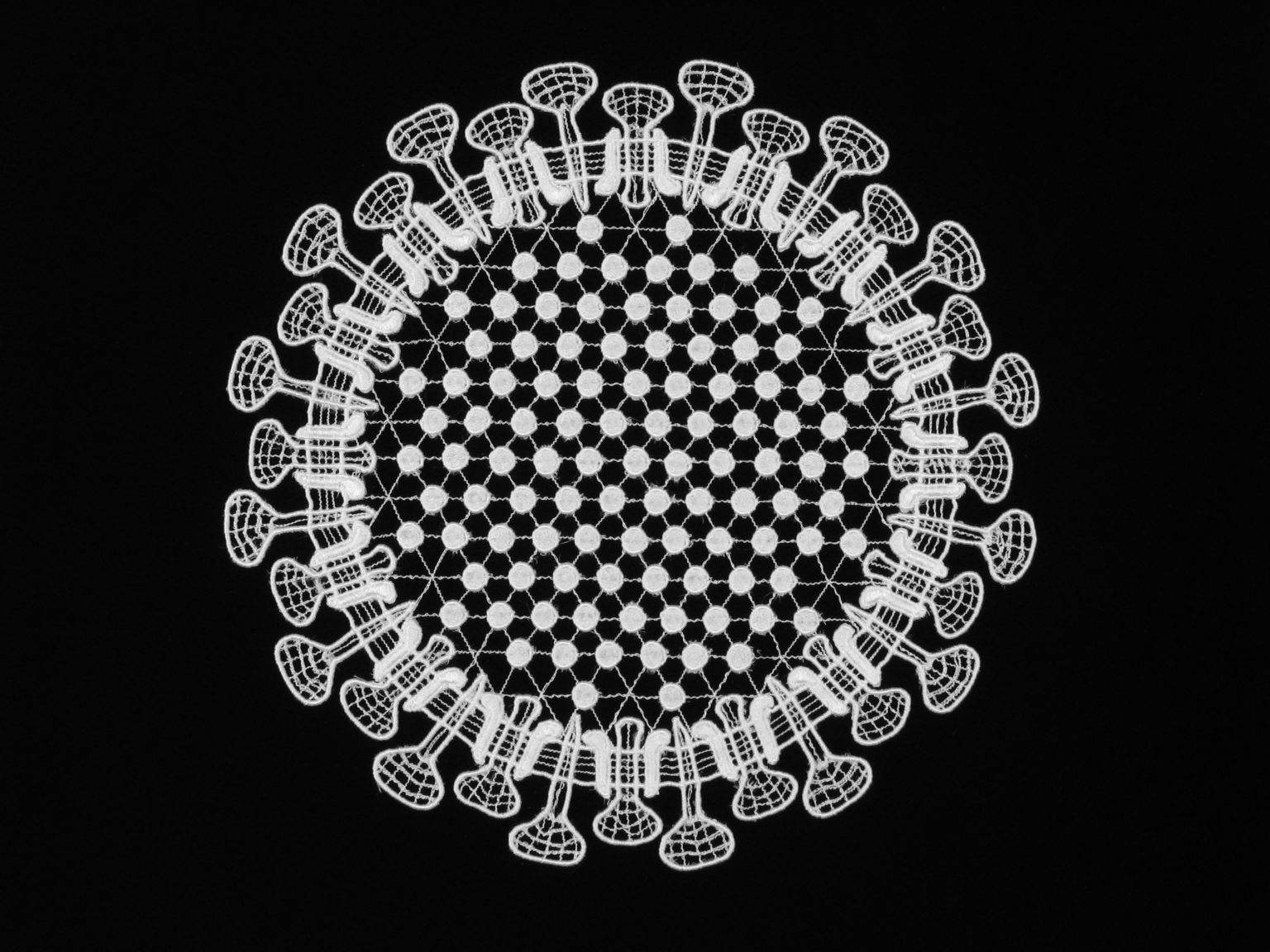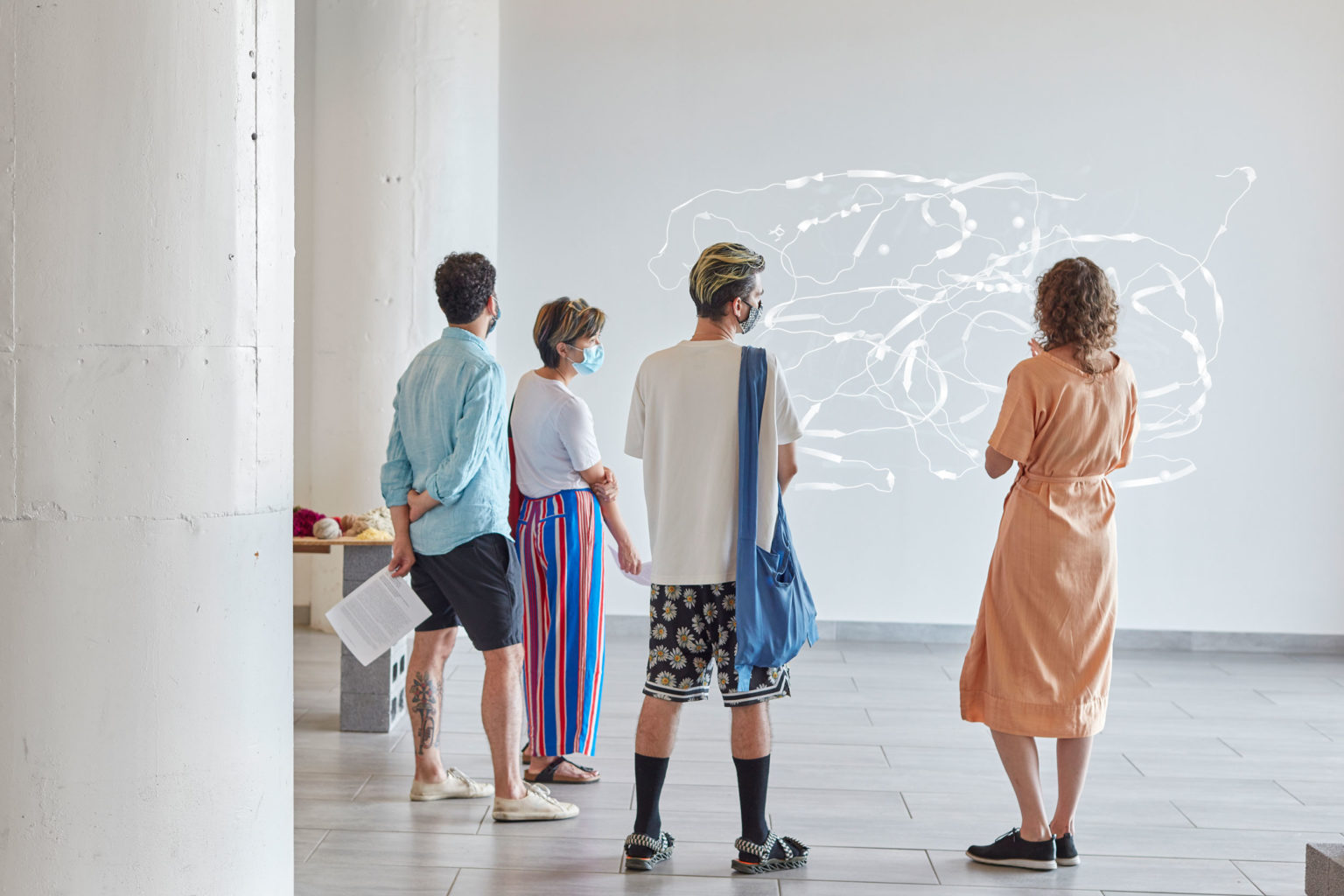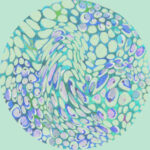Visualizing
the Virus
Syndemic Sublime
A SciArtist (re)visualizes SARS
“Doilies (SARS)”, created in 2004 in response to the first SARS-1 outbreak, reconsiders the lace doily as an innocuous domestic artifact and reimagines its traditional motifs that reference “nature”. The radial symmetry of the doily and aesthetic conventions of lace are conflated with that of the coronavirus structure. The work evokes the intricacy of decorative textiles and their associations with the familiarity and comforts of domesticity that serve as camouflage for less ideal circumstances. Doilies themselves might serve to hide a scratch or stain on furniture. And the aesthetic conventions of lace serve as camouflage for the structure of an enveloped virus allowing a liminal experience of visibility and invisibility. Here, the DNA, RNA, protein spikes, and lipid envelopes become unassuming decorative motifs. Bioterrorism, pandemics, and anti-microbial products alike have heightened our awareness of the microbial world. The project materializes the notion that an heirloom artifact can manifest the psychological heredity of cultural anxieties. Collective traumas borne from disease are rematerialized in an heirloom artifact to be passed on from one generation to the next. The sculpture has taken on a broader resonance in light of the COVID-19 pandemic. Many of the original conceptual intentions of the project still emerge, however, with “shelter in place” policies and pleas from medical professionals for the public to “stay home”, the relationship between our biomedical status and our domestic circumstances is now amplified. The doily renders visible a “biomedical imaginary” in which our entanglements with the microbial world are increasingly complex, pervasive, and quotidian.


“Unraveling” is a series of animations that present mesmerizing meditations on invisible entanglements between natural and constructed worlds. The digital animations are created using molecular visualization software and SARS-CoV-2 spike protein models. They include playful manipulations of folded protein forms, known as “conformations”, which determine biological function including infectivity. Using specialized features of molecular visualization software in unconventional ways, the coronavirus spike protein is transformed by unraveling and morphing the folded and unfolded forms. The colors are chosen from the software’s palette for their references to nature such as plants, animals, and chemical elements. The video titles in the series echo the colors’ names that are evocative of idyllic representations of the natural world such as blue skies, green forests, ripe fruit and romantic flowers. The mere act of adding color is another layer of translation and fabrication since most viruses are smaller than visible wavelengths and therefore have no color. The color palette and its naming conventions reveal additional layers of abstraction built into the interfaces of the technologies we use to engage with and manipulate the natural world. “Unraveling” was developed in remote collaboration with scientists Edgar Davidson and Ben Doranz at biotech company Integral Molecular while “sheltering in place” for COVID-19.
“Denatured (SARS-CoV-2 Spike protein RBD with Fab and nanobody)” is a digital animation created using molecular visualization software as a generative animation tool. Models of folded proteins are unraveled with molecular “sculpting” tools. By using the specialized features of the software in unconventional ways, I created animations that are collaborative doodles of sorts between the software, my hand, and the molecular structures that are being disrupted. As the protein structures are manipulated, the software renders uncanny disturbances in the form of sometimes spastic and sometimes sublime movements. These videos are unedited screen recordings of performed interactions where my mouse is hidden. The invisible labor of the user and the software is collapsed by the seemingly autonomous moving form. This animation from the “Denatured” series is a screen recorded unraveling of a SARS-CoV-2 receptor binding domain in complex with a llama nanobody. Llamas are used to produce antibodies for human drugs and vaccines due to their unique antibody structures called nanobodies. I often use textiles materialities and gestures in both real and virtual spaces to examine our entanglement with the biological world and the cultural constructions by which we engage with it—constructions of worlds that are so often mediated by technology.

Laura’s work has been recently featured in the PNAS article “Science and Culture: The evolving portrait of a virus” by Stephen Ornes.
